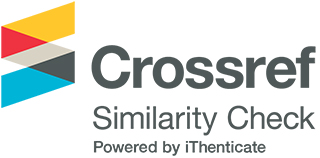Addictive Behaviour Predicts Self-Harm in Adolescents
DOI:
https://doi.org/10.33422/ejbs.v8i2.1604Keywords:
self-harm, addictive behaviour, prediction, gender, adolescenceAbstract
Self-harm is a growing and high-risk undesirable phenomenon that occurs primarily during adolescence and in young adulthood. It causes serious disruption to the physical and psychological integrity of an individual and can even be life-threatening. The severity and prevalence of this behaviour direct the attention of professionals to help affected individuals as well as to the most effective methods of its prevention. In this context, it is exceptionally important to know the concurrent and especially the risk factors of self-harm. One area that research focuses on is the identification of addictive features of self-harming behaviour as well as the possible connection of self-harm with various other addictions. This work focuses on verification of a relationship between addictive and self-harming behaviour, on exploration of the type of mutual connections as well as on the gender specifics of this relationship. The study was conducted on a sample of 203 participants aged 15 – 19 years (mean age = 16.62 years), 58.6% (N = 119) of whom were women. Spearman’s non-parametric correlation demonstrated a statistically significant (p < 0.001), moderately strong (rs = 0.549) positive correlation between addictive behaviour and self-harm. Linear regression analysis showed that addictive behaviour caused 40.3% of self-harm in the studied research sample of adolescents. The strength of the prediction is notably determined by gender – while for boys R2 = 0.252, for girls the coefficient of determination reached double the value at 0.520. It is evident from the results that addictive behaviour significantly influences the occurrence of self-harm, a fact that significantly affects not only the understanding of the typical features of self-harming behaviour, but also indicates the nature of the mechanisms sharing in its emergence and maintenance in the repertoire of maladaptive coping strategies. It is also an important implication for psychological intervention and therapy of self-harming adolescents, especially girls.
Downloads
Published
Issue
Section
License
Copyright (c) 2025 Demuthova Slavka, Demuth Andrej, Chylova Sabina

This work is licensed under a Creative Commons Attribution 4.0 International License.












